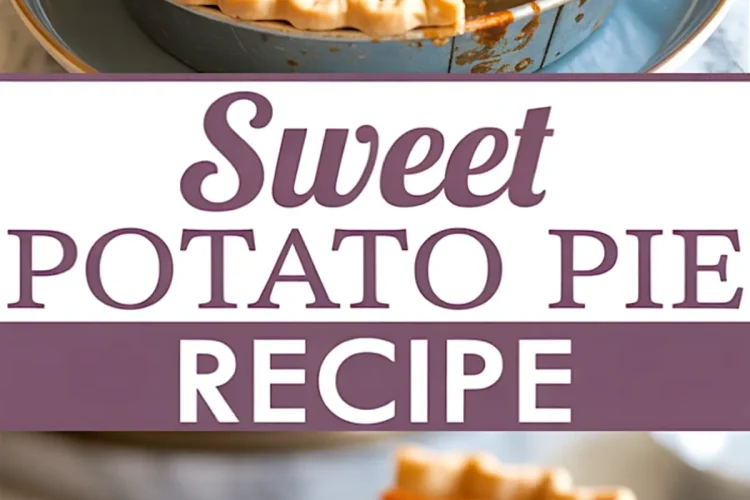Family stories fill kitchens long before pies reach tables.
Sweet Potato Pie carries those stories through every warm slice.
This guide walks you through my proven routine so you can greet guests with confidence.
I have baked pies professionally for fifteen years, testing recipes inside tiny flats and large studio kitchens.
Readers trust my step-by-step method for the North Carolina Lemon Pie, and the same care appears here.
You will learn why roasting sweet potatoes boosts flavor and how small spice shifts shape the finish.
Sweet Potato Pie shines among Thanksgiving Pie Recipes through its gentle earthiness.
Mashed roasted tubers set a velvet base that welcomes vanilla and nutmeg.
My approach centers on texture first, sweetness second, and crust crispness always.
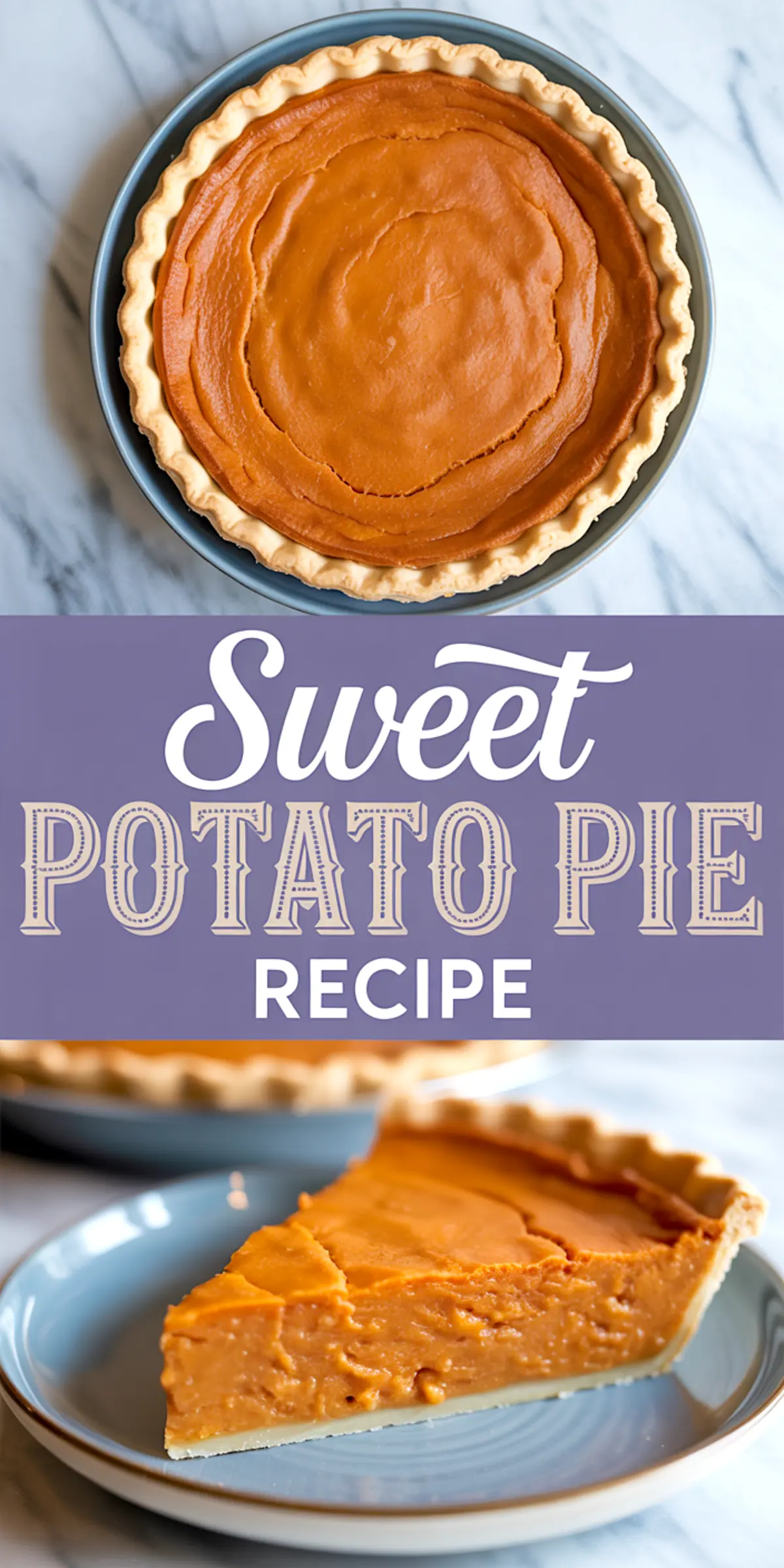
History And Heart Behind Sweet Potato Pie

Enslaved cooks in the American South turned garden harvests into celebration desserts.
Sweet potatoes proved abundant, affordable, and “good keeping,” giving pies beloved status during fall gatherings.
Families still pass down those pantry-wise habits, turning simple produce into rich comfort.
Today many home bakers link this pie with Sweet Potato Side Dish memories from Sunday dinners.
The filling echoes Sweet Potato Cobbler syrup yet settles like custard.
Such overlap shows how one ingredient travels between courses gracefully.
Regional twists appear across counties.
Coastal cooks add coconut milk, while mountain neighbors boost ginger for warmth.
Each variation proves that identity stays fluid yet remains rooted in roasted sweet potatoes.
Ingredient Notes That Shape Flavor
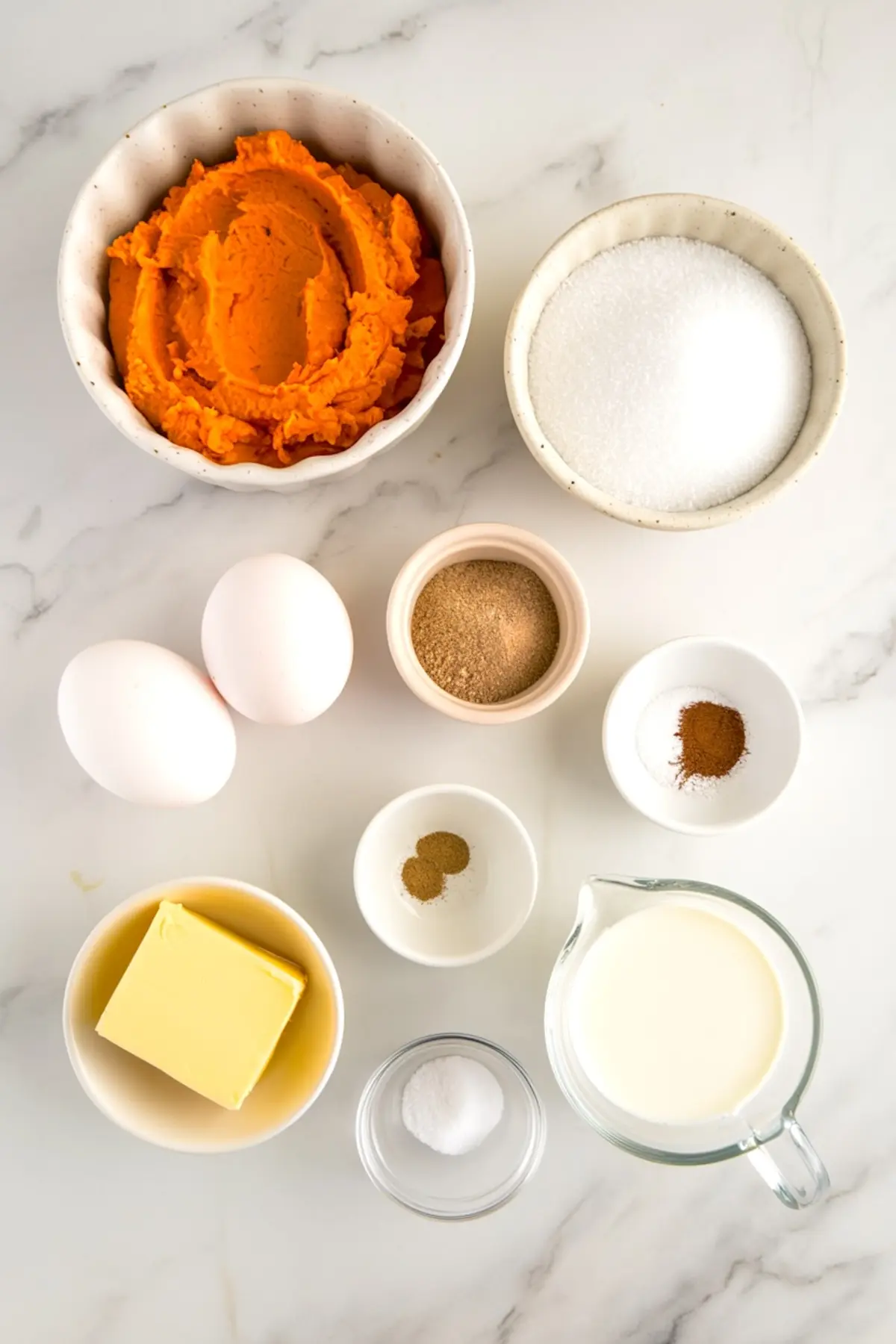
Roasted orange flesh delivers caramel notes beyond those in canned purée.
Brown sugar deepens that tone, and evaporated milk loosens the mash without watering flavor.
Butter locks in gloss and supports a flaky crust, guiding the pie to smooth slices.
I have tested both evaporated milk and half-and-half across dozens of pies.
Evaporated milk gives a slightly firmer set, while half-and-half raises creaminess yet lengthens baking time.
Choose evaporated milk if you carry pies beside a Chocolate Pie to a potluck, and select half-and-half for plates served right away.
Fresh nutmeg leans floral, and cinnamon adds warmth, but a pinch of allspice tips the pie closer to Sweet Potato Pudding comfort.
Vanilla rounds the edges so spices sing rather than shout.
Swapping half the sweet potatoes for roasted squash echoes Butternut Squash Pie notes.
Roasting And Mixing For Silk Texture
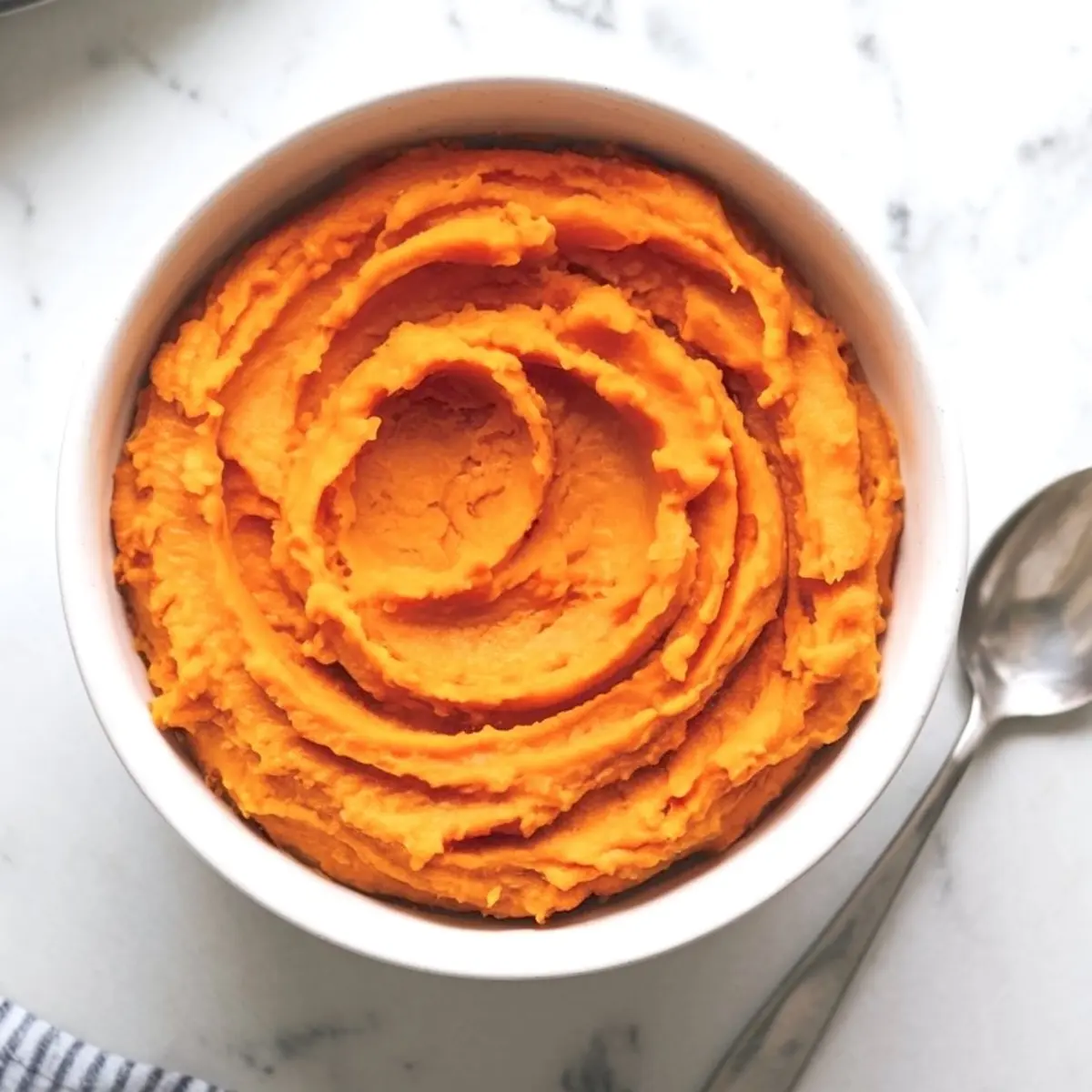
High heat at 400 °F pulls moisture from the tubers and concentrates sweetness.
Cooling potatoes fully before peeling keeps steam from thinning the mash; I learned that after a hurried Cherry Piesession cost structure.
A stand mixer then whips air gently, keeping the filling light rather than dense.
Eggs enter last, and residual heat stays gentle so they remain silky.
Sugar disperses evenly after that whisking, creating a glossy batter that pours with ease.
The sight resembles loose Sweet Potato Cake batter yet settles firmer under slow oven heat.
Pouring the filling into a chilled crust delays butter melt and reduces shrink-back.
Small bubbles on the surface signal over-mixing, so a single tap of the pie dish settles the mixture.
The batter then bakes evenly without cracks.
Baking And Cooling Steps For Clean Slices
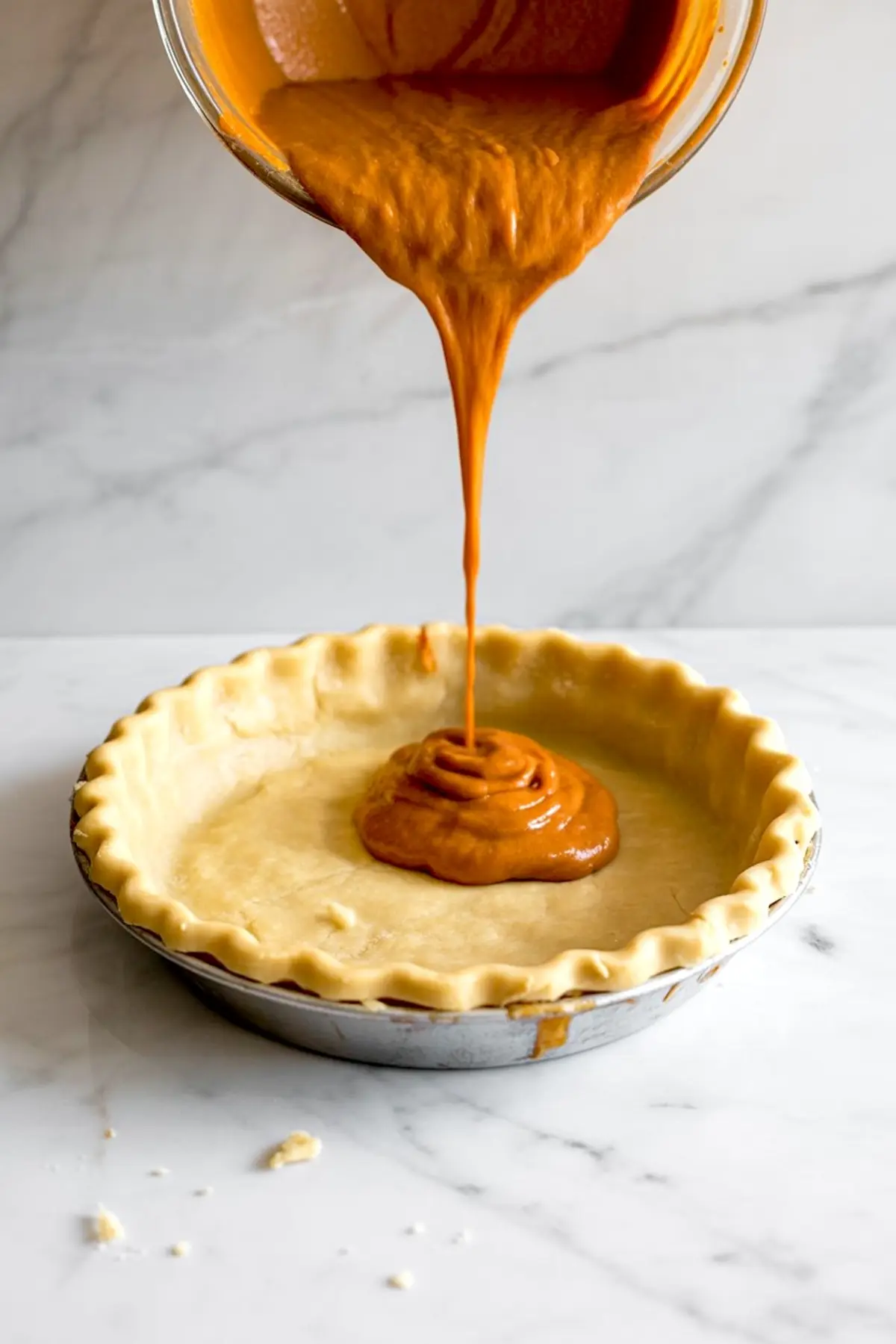
Bake at 350 °F until the edges puff slightly and the center shows a gentle wobble.
That movement fades during cooling, giving each slice a custard line as sharp as my summer Rhubarb Pie.
A wire rack under the pan promotes even air flow.
Cooling the pie for at least two hours on the counter allows the custard to set.
Refrigeration later firms the filling for next-day serving.
Flavors meld further, highlighting nutmeg and vanilla.
Home bakers sometimes ask about blind-baking the crust first.
A pre-bake prevents sogginess yet risks over-browning, so parchment shields the edge halfway through.
This strategy balances color and crispness without extra gadgets, making the process easier than assembling a Sweet Potato Quiche.
Serving And Storing With Ease
Room-temperature slices shine alongside lightly sweetened whipped cream.
A sprinkle of candied pecans adds crunch and nods to Sweet Potato Dessert Recipes shared at family reunions.
Maple drizzle pairs well, especially during autumn evenings.
Store leftovers covered in the refrigerator for up to four days.
Chill extends freshness, and a quick pass under a low oven revives the crust.
Frozen slices thaw overnight and fit lunch boxes or midnight snacks.
Planning ahead brings peace during crowded holiday schedules.
Bake the crust a day early and keep it loosely covered at room temperature.
Mix the filling the night before, then pour and bake on serving day for bakery-fresh flavor.
Serve the pie as a finale to roast turkey or as breakfast with coffee.
The filling holds sweet yet earthy tones, matching both Sweet Potato Dessert and Sweet Potato Side Dish categories.
Guests often request a second piece, which validates your care.
Pairing Suggestions For Every Season
Warm spices invite easy drink pairings.
I favor a chilled glass of tawny port during winter because caramel notes echo roasted tubers.
Summer gatherings suit unsweetened iced tea that balances the custard richness.
Quick Takeaways
Roasted potatoes deliver deepest flavor.
Evaporated milk grants a tidy slice, half-and-half grants extra cream.
Complete cooling secures a clean cut.
Save And Share Your Slice Stories
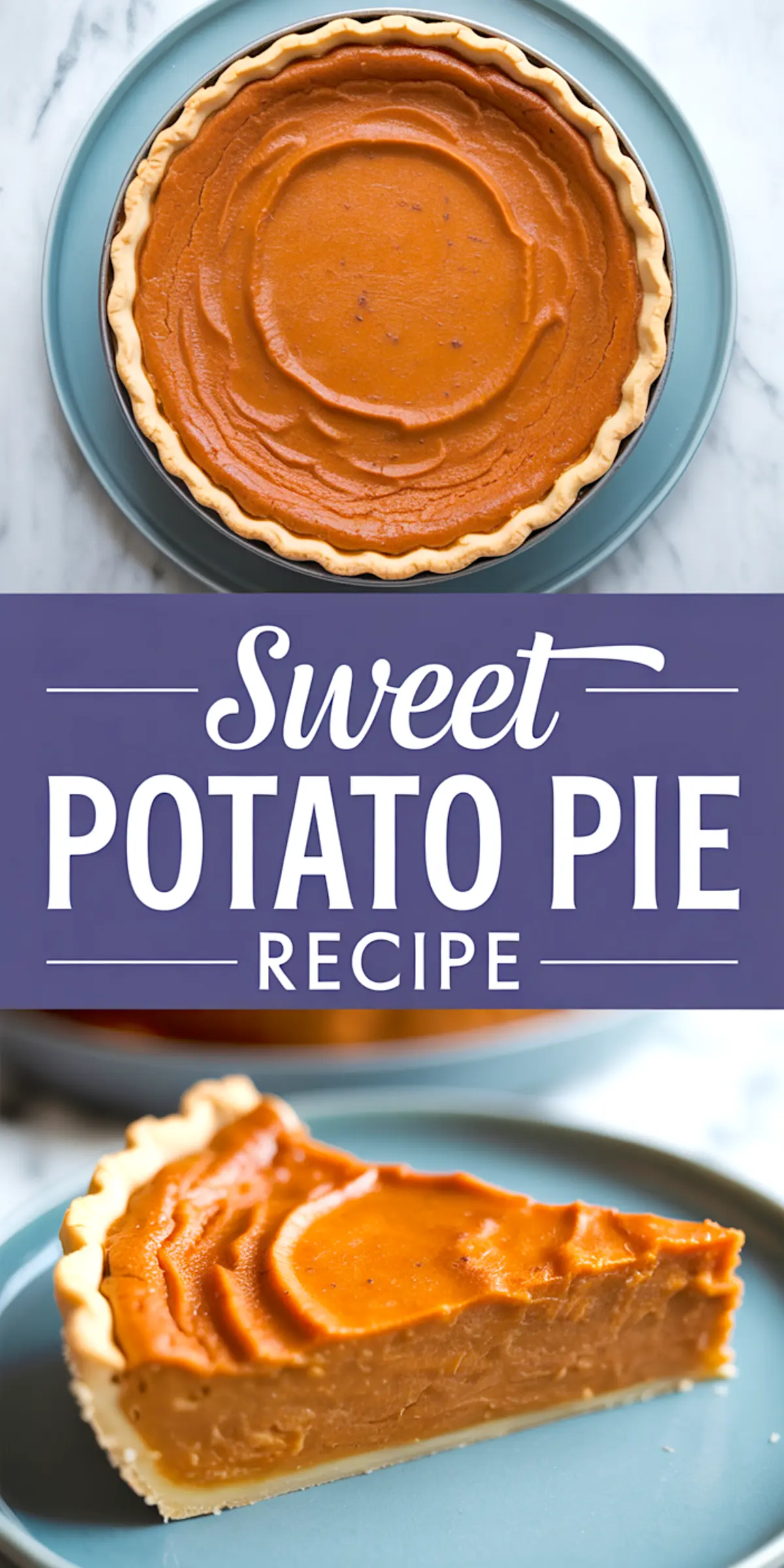
Pin this guide now so your recipe board stays ready.
Share your results in the comments because your experience helps other bakers.
Questions receive quick replies from me and the community.
Sweet Potato Pie Recipe

A traditional Southern sweet potato pie made with roasted sweet potatoes, warm spices, and a buttery crust. The filling is smooth and custard-like with a naturally sweet and earthy flavor that makes each bite rich and satisfying. Roasting the sweet potatoes brings out their depth, while the touch of vanilla and spice ties everything together.
Ingredients
- 1 9-inch unbaked pie crust
- 2 cups mashed roasted sweet potatoes (from about 2 large sweet potatoes)
- 3/4 cup granulated sugar
- 1/4 cup brown sugar (light or dark)
- 2 large eggs
- 1/2 cup evaporated milk (or half-and-half)
- 1/2 cup unsalted butter, melted
- 1 teaspoon pure vanilla extract
- 1/2 teaspoon ground cinnamon
- 1/4 teaspoon ground nutmeg
- 1/4 teaspoon salt
- Optional: 1/4 teaspoon ground ginger or a pinch of allspice
Instructions
- ROAST THE SWEET POTATOES: Preheat oven to 400°F (200°C). Wash the sweet potatoes and prick them several times with a fork. Place on a baking sheet and roast for 45 to 60 minutes, or until tender when pierced. Let cool completely, then peel and mash until very smooth.
- PREPARE THE FILLING: In a large bowl, whisk together the mashed sweet potatoes, granulated sugar, brown sugar, eggs, and melted butter until thoroughly combined. Stir in the evaporated milk, vanilla extract, cinnamon, nutmeg, salt, and any optional spices. Mix until the texture is smooth and custard-like.
- ASSEMBLE THE PIE: Preheat oven to 350°F (175°C). Roll out the pie crust into a 9-inch pie dish. Pour the sweet potato mixture into the crust and smooth the surface evenly using a spatula.
- BAKE: Bake the pie for 50 to 60 minutes, or until the filling is set around the edges and the center only slightly jiggles when gently shaken. A toothpick inserted near the center should come out mostly clean.
- COOL: Transfer the pie to a wire rack and let it cool completely at room temperature. This step allows the filling to set fully for clean slices when serving.
Notes
The pie can be made a day ahead and stored, covered, in the refrigerator. Serve at room temperature or lightly chilled. Roasting the sweet potatoes instead of boiling them adds a deeper flavor and prevents excess moisture in the filling.
Nutrition Information
Yield
8Serving Size
1Amount Per Serving Calories 402Total Fat 23gSaturated Fat 11gTrans Fat 0gUnsaturated Fat 10gCholesterol 82mgSodium 278mgCarbohydrates 46gFiber 1gSugar 27gProtein 4g

